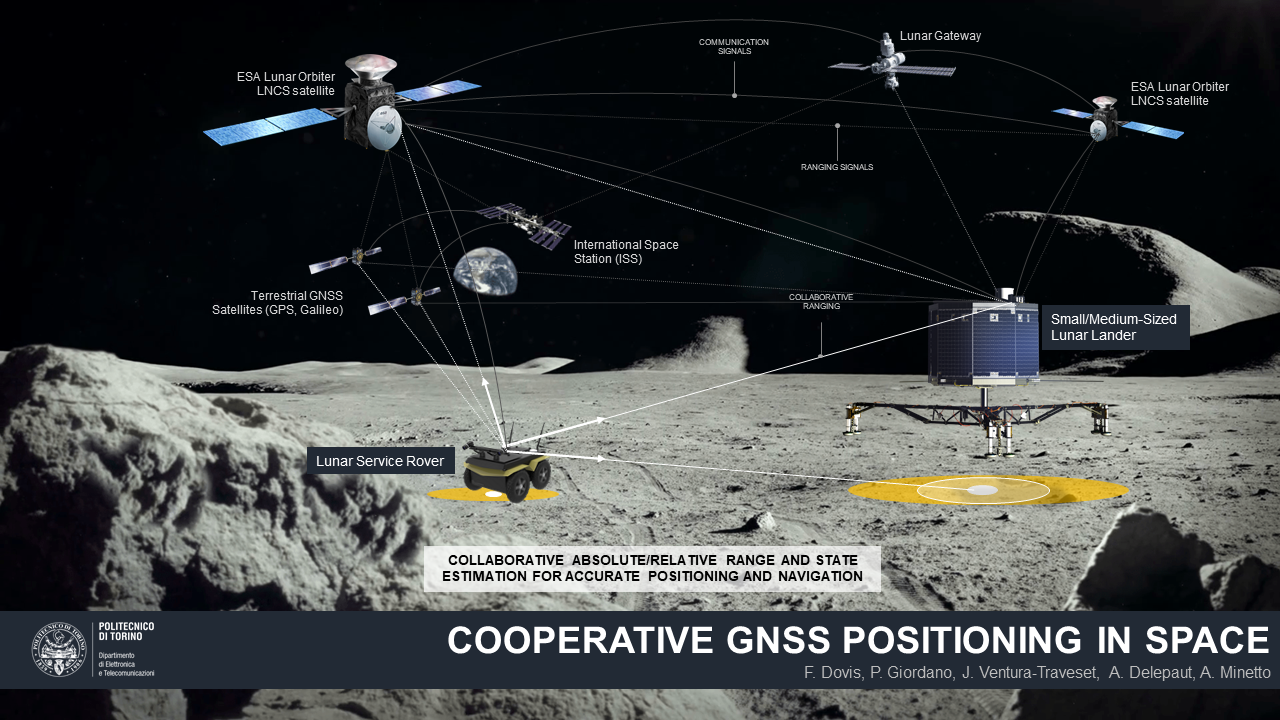There is a great interest in extending the use of GNSS in Space as witnessed by past studies that are addressing not only the use on board of LEO, MEO and GEO satellites, but also to support cislunar missions and initiatives. The performance in Space are limited by the very low signal-to-noise ratio at which the receiver has to operate, the high Geometric Dilution of Precision, and other limiting factors. While coupling with proprioceptive and exteroceptive sensors aids to mitigate the limitations of the high Doppler rate, and the low C/N0, geometry can only be improved by adding additional reference sources. The concept of cooperative GNSS positioning is quite effective when the number of visible GNSS satellites is limited. It is based on the estimation of the baseline between a pair of networked GNSS receivers which can rely on a communication link, one of which benefiting from favourable visibility conditions. Such a baseline is integrated as an additional range measurement. It has specific time variant statistical errors such that, in order to be effective, advanced state estimation techniques or new integration concepts must be addressed, such as advanced Bayesian state estimation and machine learning approaches (i.e. recurrent neural networks).
Theoretical studies showed that the improvement of precision and accuracy of the position depends on the quality and synchronization of the GNSS measurements, the latency of the channel, but also on the relative position of the cooperating receivers. This opens the door to optimized designs (orbits, communications, GNSS receiver, smart integration, etc.) for new communication and navigation Space systems exploiting this concept. In the context of a next generation of Space initiatives, the innovative concept proposed here could be of interest to different ESA programmes planned for this decade (e.g. Lunar Pathfinder, Moonlight/LCNS and EL3) – details provided in Section 2.1, "Applicability to future ESA missions".

